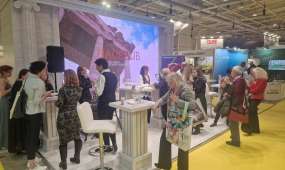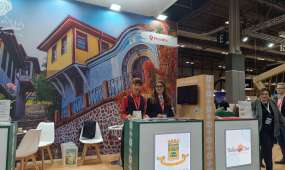Lamartin House
Lamartin House
Its owner was the eminent representative of the Plovdiv merchant class, Georgi Mavridi. It was built by some unknown master-builder in 1829- 1830 and is one of the biggest and most beautiful symmetrical houses in the Old City. It was brand new and in its full splendor of a remarkable architectural creation, when the great French poet and traveler Alphonse de Lamartine stayed there in the summer of 1833, on his way back from a journey to the Middle East. He spent only three days in the house, but was charmed by its hospitable hosts and attested this with his writing.
Even a cursory glance at the courtyard will convince us that the master-builders were extremely ingenuous in the adaptation of the building to the complex terrain and its planning. The house has irregular outlines of its foundations and of the ground floor. The upper two floors are built in classical symmetry. Each of them juts out like an oriel above the lower floor, which increased the volume of the building. A big wooden gate opens to the courtyard of the house. The courtyard itself is cozy, terrace-like, with small staircases to the different level, with a beautiful annex furnished today as a small reception room.
A stone staircase leads to the first floor. The hayets on the two floors consist of three parts: a small rectangular lounge, an oval lounge and a staircase cage. An elegant alafranga niche with painted decoration is seen at the bottom of each of them. There are four symmetrical rooms of different sizes, well-glazed and with a rich geometric wood-carved decoration on the ceilings and doors. The house was used as a home for recreation of the Bulgarian writers. A small museum exhibition devoted to Lamartine was organized in one of the rooms on the first floor. The guest book of exhibition features proudly the names of famous persons of our times from all over the world: writers, public figures and politicians.
The building is closed for visitors due to planned restoration work.













Add new comment